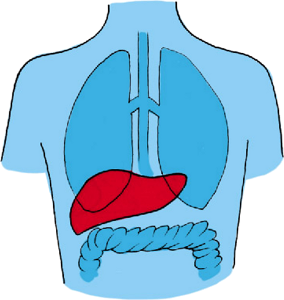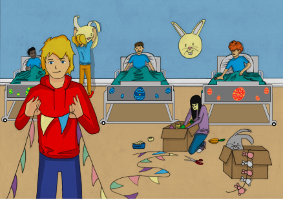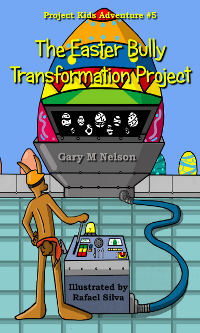 ‘Kids may hate liver, but they all need a healthy one.’
‘Kids may hate liver, but they all need a healthy one.’
This is Charlotte. She needs a new liver.
While Charlotte is just a girl in a story (and not an actual person), there are plenty of real-life children just like her – that is, suffering from chronic diseases like cirrhosis or other liver problems, kidney failure, and other conditions that don’t get better on their own, or even with medication.
These children don’t have as much fun or freedom as other children, as they need to have regular hospital visits and can be limited in their physical activities. Some conditions, like kidney disease, can be helped by ongoing treatments, like renal dialysis.
However, treatments and medication don’t always make things better, and over time the kids can get sicker and the only way to help some of these children is for them to get a transplant.
What’s a transplant?
A transplant is when they replace a diseased organ (part of the body) with a healthy one – like a kidney, or part of a liver. These need to be donated by someone else who wants to help, and surgery is involved – to remove the healthy organ from the donor and to put it into the sick person, replacing their faulty organ.
A very real problem

Liver disease and other chronic medical conditions are very real, and do happen in children as well as adults. Thousands of children a year worldwide are in need of transplants for a range of conditions, from liver failure to renal (kidney) failure and other problems. Sadly, not all of them get the transplants they need in time. Charlotte’s symptoms of progressive liver failure are not the only ones that can occur, but they are some of the common ones. The signs of elevated Bilirubin are very real – from the yellowing of the skin and eyes as it starts to build up, to the dark green-brown skin tone as Bilirubin levels rise dangerously higher and liver function worsens. I’ve seen it happen to someone very close to me.
Medical information
Here are some medical resources and links related to liver failure and transplants:
• Cirrhosis of the liver in children (Children’s Hospital)
• Cirrhosis of the liver – stages, causes, symptoms and treatments (Web MD)
• Partial Liver transplants (Oxford Journals)
Where can I learn more, and how can I help?
 Find out more about your national or regional organ donation/ transplant organisation.
Find out more about your national or regional organ donation/ transplant organisation.
Most countries have an organ donor and transplant organization that helps match up people who need a transplant with people who are willing to donate – or even just help out by volunteering, or donating money to help kids and adults get the transplants they need. Organ transplants can be very expensive, and if you are able to help out a family in need in some way, that is a wonderful thing!
Here is a partial list of organ donor registry/transplan organizations:
(USA) U.S. Government information on Organ Donation and Transplantation (organdonor.gov)
(Canada) Canadian Transplant Society
(Portugal) SNS Doação de Órgãos e Transplantes
International Liver Transplant Society

